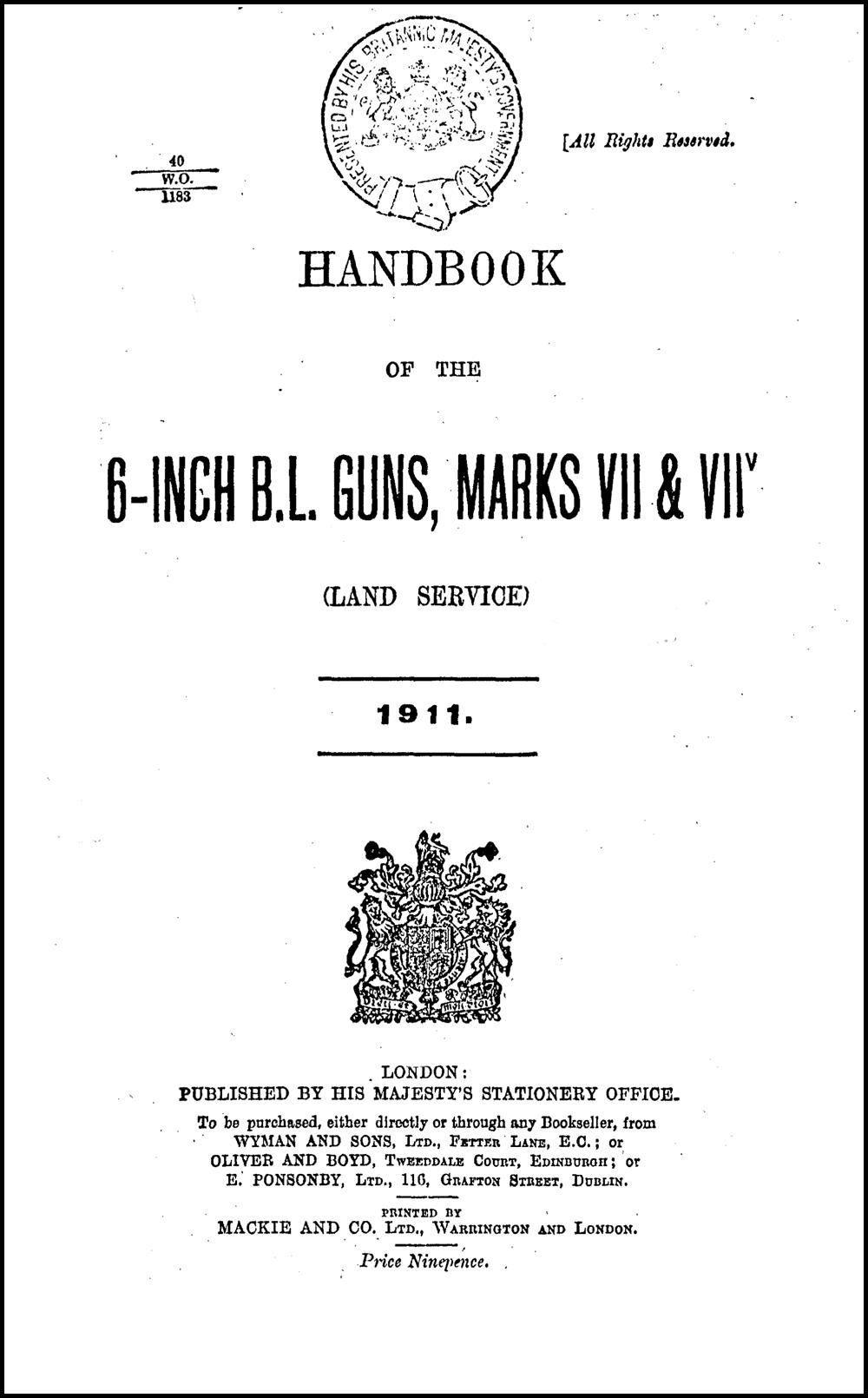Carlingnose Battery – 6 inch guns
| < The battery | Δ Index | Ammunition > |
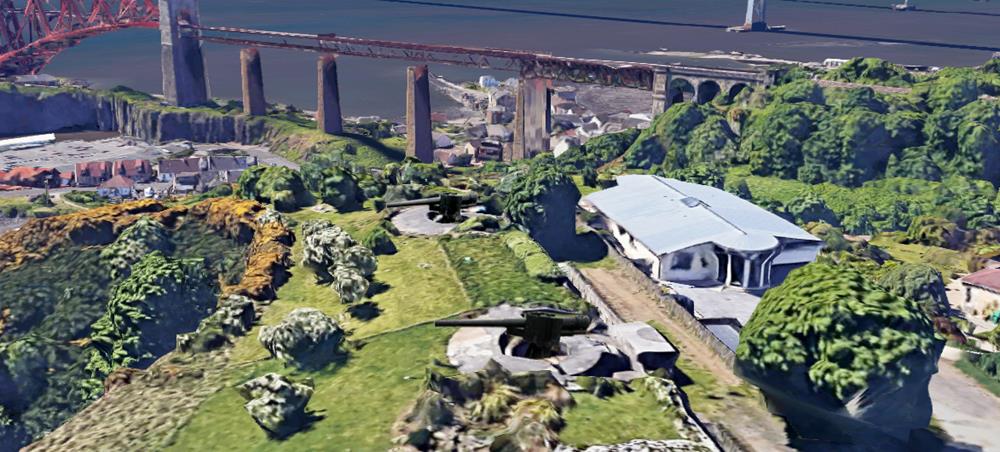
The Fort Record Book [WO192_101] identifies the armament as two 6 inch wire Mk VII B.L. [breech loading] guns on a Carriage Garrison C.P. [central pillar] mounting Mk. 2.
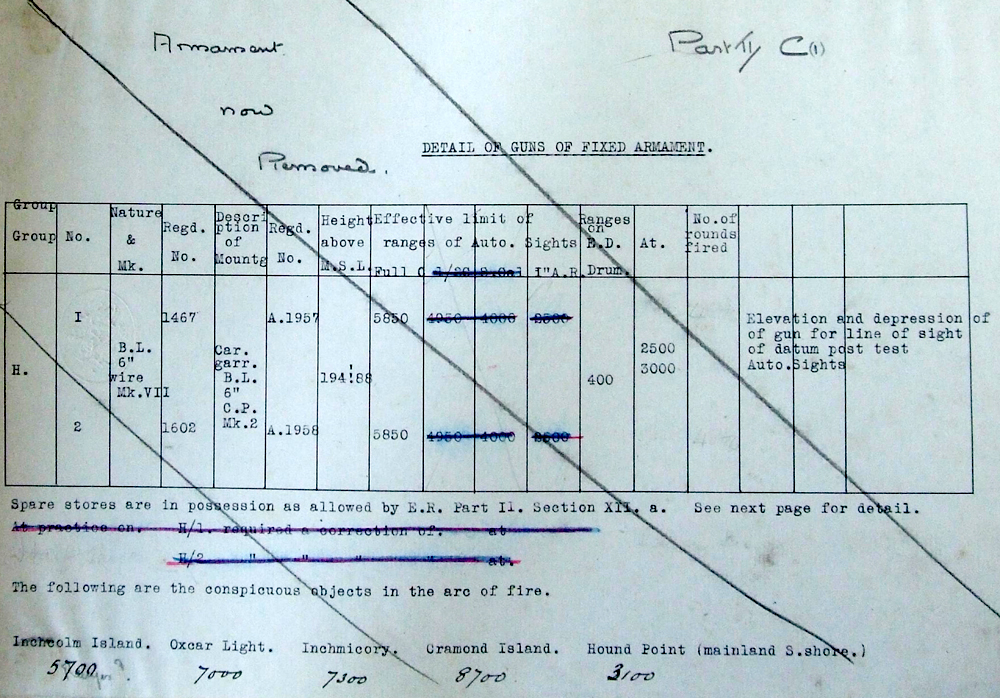 Fort Record Book page 38
Fort Record Book page 38
From Wikipedia
The BL 6-inch gun Mark VII was a British naval gun dating from 1899. In 1915 it was mounted on a heavy travelling carriage to become a British Army heavy field gun. It also served as one of the main coast defence guns throughout the British Empire until the 1950s.
The Mark VII gun superseded the QF [Quick Firing] six-inch gun of the 1890s which had introduced brass cartridge cases instead of silk-bag cartridges to increase rates of fire. However it was found that a new single-action breech mechanism could achieve the same rate of fire as the QF gun with brass cartridges. The silk-bag cartridges were easier to handle and saved valuable weight and magazine space on naval ships.
The 6-inch Mk VII gun, together with the 9.2-inch Mk X gun, provided the main coast defence throughout the British Empire, from the early 1900s until the abolition of coast artillery in the 1950s. During World War I, 103 of these guns were in service in coastal defences around the UK.
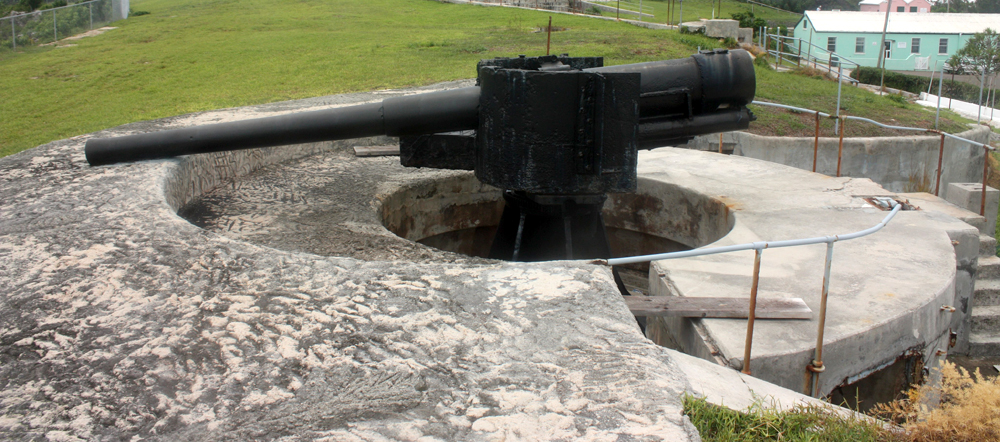 A 6 inch Mk VII B.L. [breech loading] gun on a C.P. [central pillar] mounting (not at Carlingnose).
A 6 inch Mk VII B.L. [breech loading] gun on a C.P. [central pillar] mounting (not at Carlingnose).
 An aerial view of another 6 inch Mk VII B.L. gun on a Central Pillar mount.
An aerial view of another 6 inch Mk VII B.L. gun on a Central Pillar mount.
The 6 inch BL gun handbook 1911 gives full details of the guns and their operation.
The Naval Gun Barrel Construction website gives technical details of gun construction.
Barrel and Breech
The 279 inch (7 m) gun barrel and breech mechanism weighed 7 tons

The gun barrel has to withstand the enormous pressure generated when a cartridge is ignited in the ignition chamber immediately in front of the breech. This pressure accelerates the projectile along the barrel which is rifled causing the projectile to spin which improves its stability in flight.
Maximum pressure is exerted in the ignition chamber. The pressure decreases as the gases expand and push the projectile along the barrel. So the barrel has to be strongest at the breech end but can taper towards the muzzle.
The strength to withstand this pressure is achieved by building a composite barrel from a set of concentric steel tubes, wrapped with layers of steel wire round the breech end and capped with an outer jacket.
The “A” tube extends the full length of the barrel from the breech to the muzzle. It consists of two layers. The inner diameter of the outer layer is narrower than the outer diameter of the inner layer. The outer layer is heated in an oven to expand its diameter until it can be forced onto the inner. As it cools it compresses against the inner layer. This gives it the combined “A” tube strength to withstand the expansive force in the barrel when a shell is fired.
A series of layers of steel wire are then wrapped round the composite “A” tube from the breech end to about half way along the barrel, to further increase the strength over the ignition chamber.
A “B” tube is shrunk onto the “A” tube from the end of the wire wrapping to the muzzle.
Finally an outer jacket is shrunk over the wire wrapping and part of the “B” tube.
The breech bush is screwed into the end of the “A”-tube, and a stiffening breech ring is screwed onto the jacket.
 A section through the gun barrel and breech block
A section through the gun barrel and breech block
The A-tube inner is coloured red
The A-tube outer is coloured blue
The wire wrapping is coloured black
The B-tube is coloured yellow
The jacket is coloured green
 A sliced version of this diagram showing more detail of the various layers
A sliced version of this diagram showing more detail of the various layers
Breech mechanism
The breech uses an interrupted thread mechanism, where the threads are removed from two quarters of the circumference of the breech block and the breech into which it is inserted.
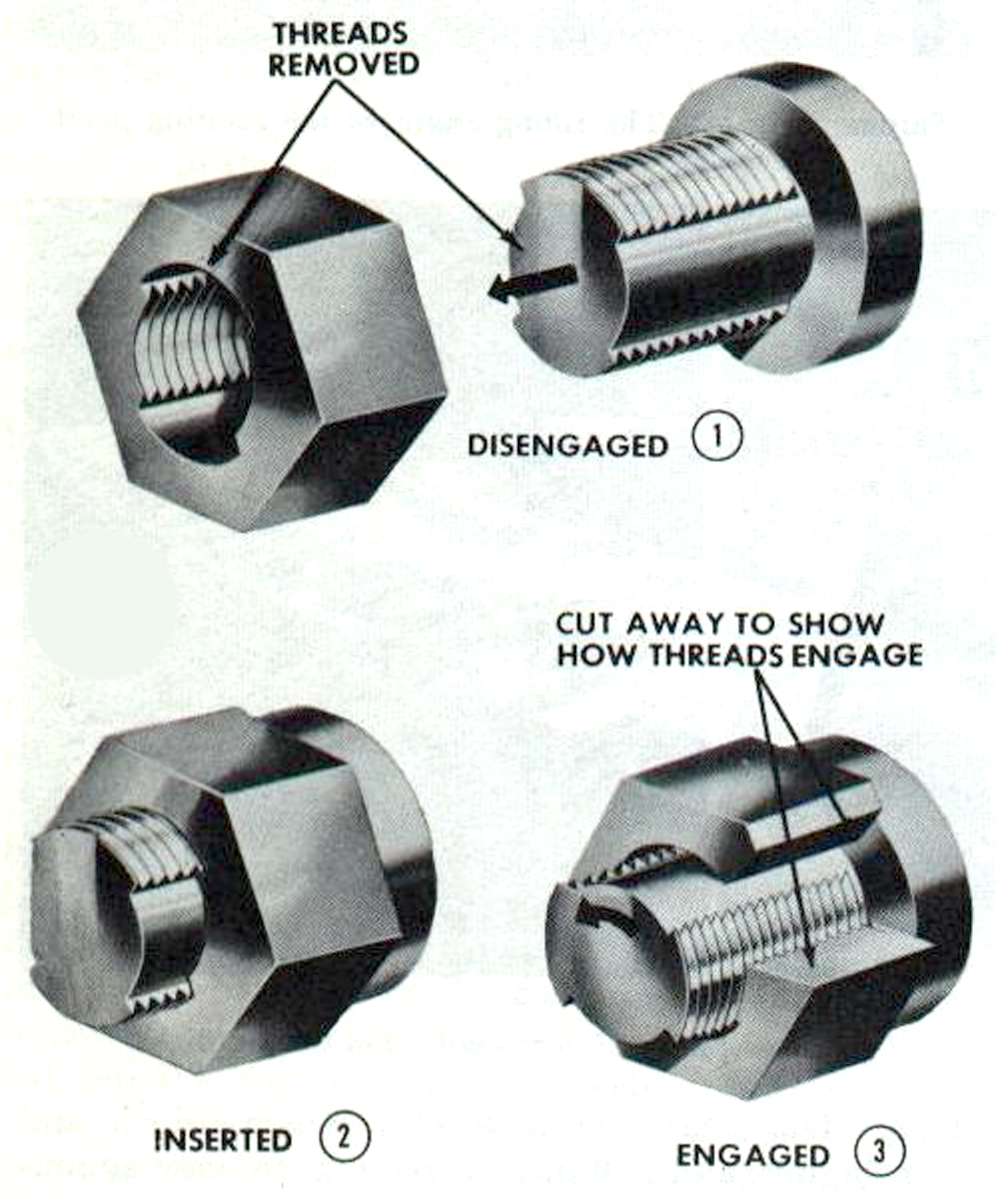
The breech block is inserted into the breech, then engaged by turning it 90 degrees.
However this simple design means that only half of the circumference of the block is engaged with the breech. In practice a more complicated stepped-thread design is used which greatly increases the contact area.
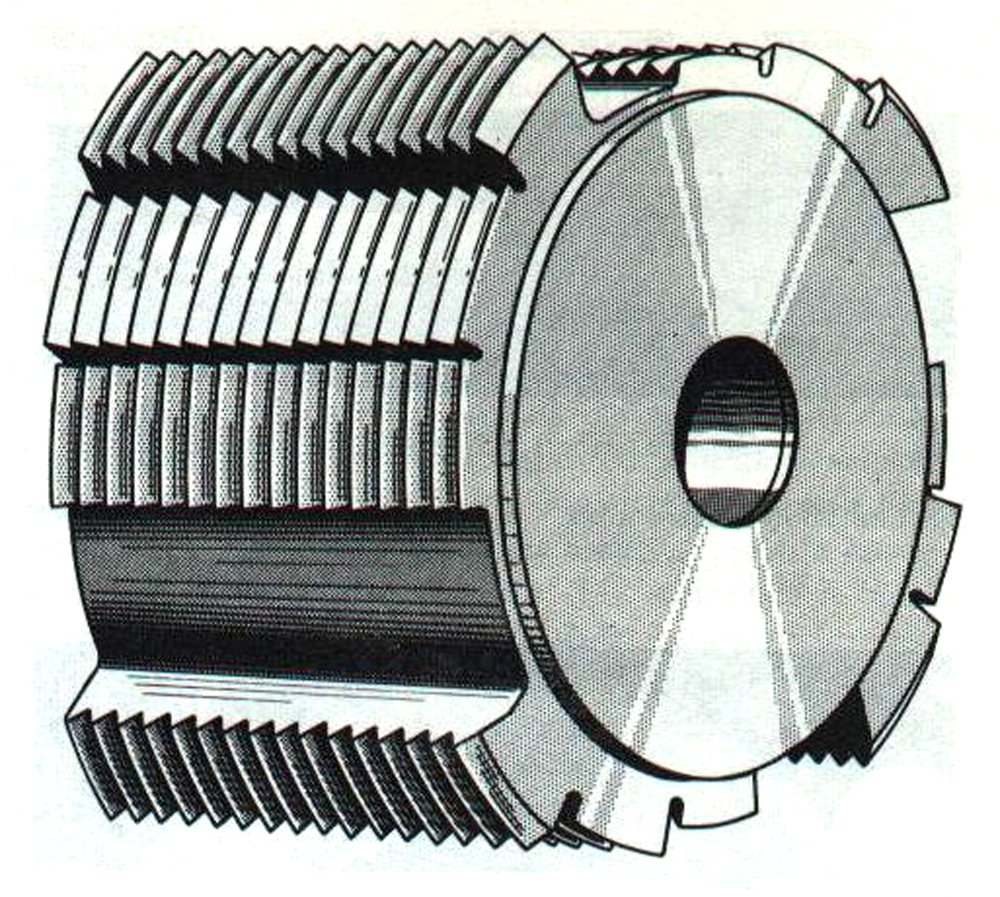 A Welin type stepped thread plug
A Welin type stepped thread plug
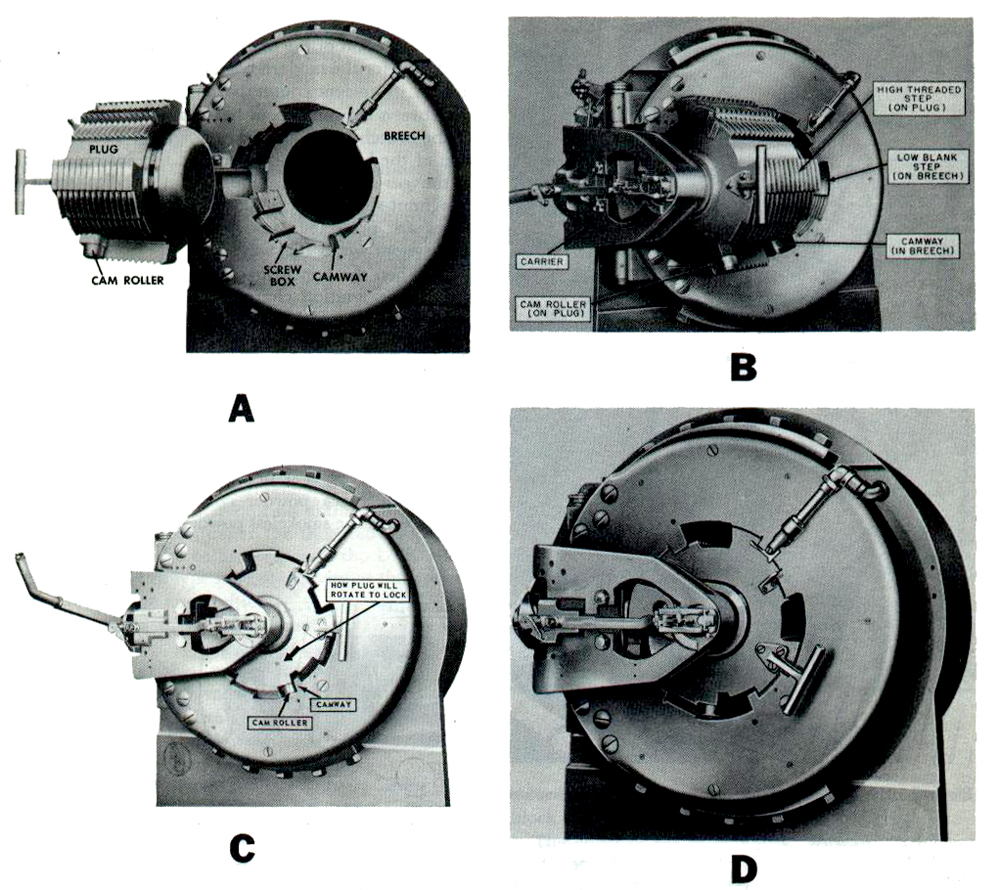 Operation of an interrupted-screw breech mechanism
Operation of an interrupted-screw breech mechanism
Cradle and carriage
The gun barrel and breech mechanism weighs 7 tons and is held in a cradle attached to a carriage mechanism. The carriage can be swung through 360 degrees horizontally and inclined to + 16 degrees elevation and to – 20 degrees depression.
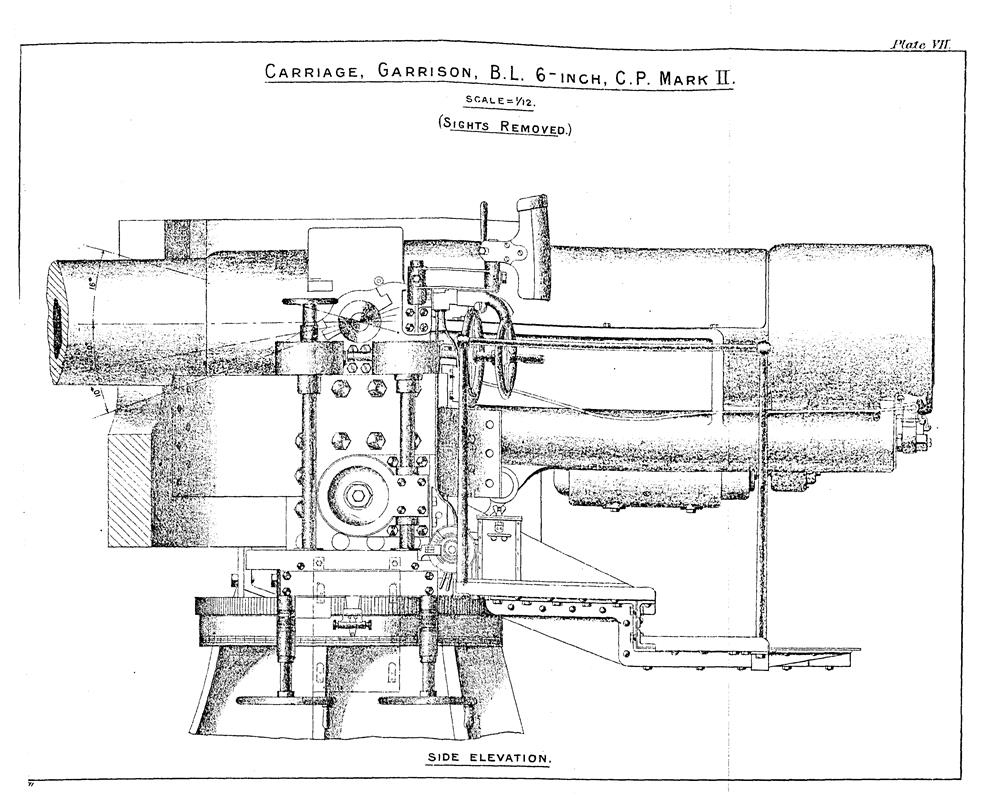 Cradle and carriage – elevation
Cradle and carriage – elevation
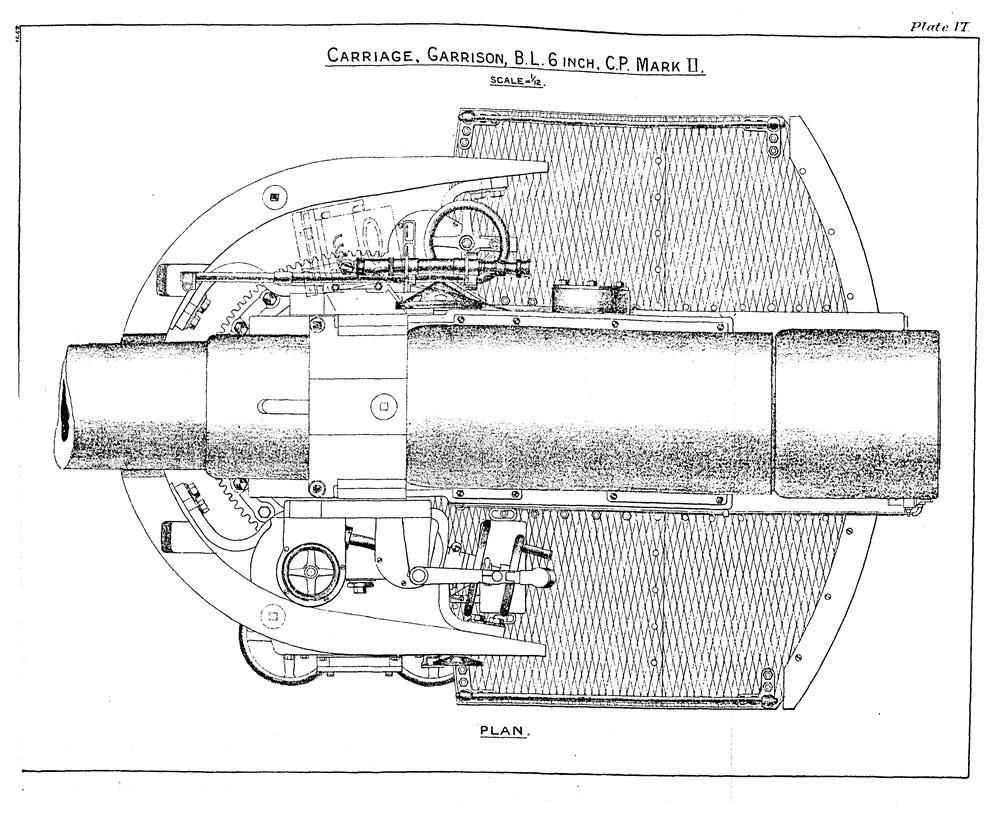 Cradle and carriage – plan
Cradle and carriage – plan
The cradle is attached to the carriage by a recoil mechanism – two springs and an oil-filled damper mechanism – this limits the recoil to 18 inches (45 cm) and returns the gun to the loading position after each round is fired.
The base of the carriage is a pedestal which bolted to the concrete foundation of the battery.
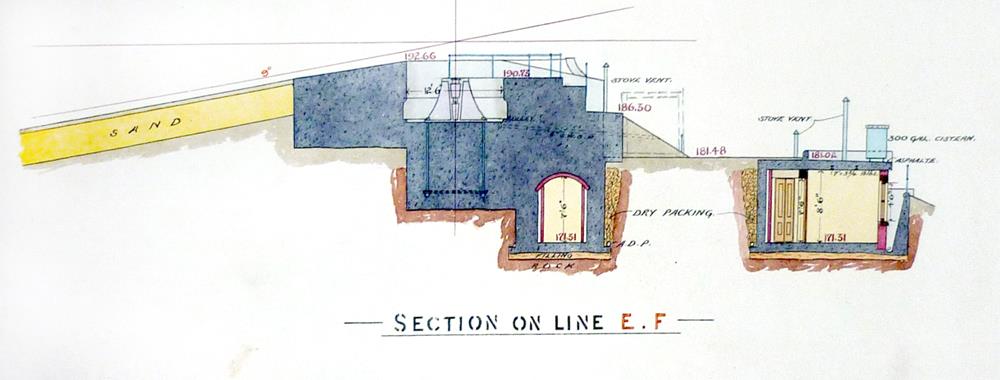 This cross section shows the gun pillar bolted to a plate deeply embedded in the concrete foundation.
This cross section shows the gun pillar bolted to a plate deeply embedded in the concrete foundation.
For more information, see the 6 inch BL gun handbook 1911
| < The battery | Δ Index | Ammunition > |
top of page

